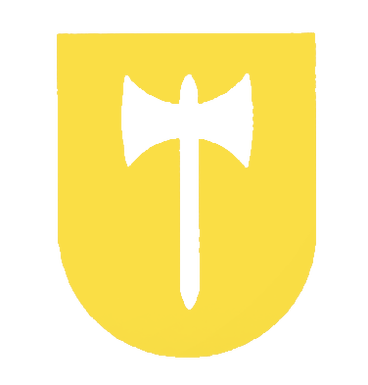March 26th: Sidesmen, Readers, and Greeters
St. Matthias’ was officially founded as a mission of St. George’s, Place du Canada, in 1873, which means our community is 150 this year! For the next 12 months, we’ll be diving into the archives to shine the spotlight on particularly interesting parts of our history.
Reading lessons and welcoming people into the church are two tasks that have been with St. Matthias’ as long as we’ve been a “we”! Each piece of scripture read and each bulletin handed out or collection plate circulated is the result of slowly evolving traditions – and a lot of coordination work. Readers have always been able to thank the church secretary for noting which readings belonged to which week, and whether they’re called “sidesmen” or “greeters,” our resident welcoming committee has always had their own set of guidelines to follow.
We have in our possession a King James Bible dating back to the early 1800s, one of several beautiful Bibles that were read from every week for most of our history. While there is no record of when the switchover to individually printed readings happened (if you know, your humble historian will be grateful to hear!), by the time Dawn Hallas arrived a little over 15 years ago, the situation was complex. The Anglican Church of Canada follows the Revised Common Lectionary, an ecumenical resource that schedules readings for every occasion in the liturgical year on a three-year cycle. In addition, Dawn learned, the parish was growing accustomed to having one out of each Sunday’s three readings in French – and not the same reading every week, which would be too simple! After a few months of scrambling every week to get a bulletin and printed readings together, she decided to simplify her life and created the glorious binder you see above. In it are the three liturgical years, with each reading in both French and English. The digital version has them already formatted, so she can just copy and paste them into her bulletin template – and so can many other secretaries in the Diocese, since Dawn’s system has been disseminated widely.
Readers have a fairly simple task: these days, they don’t even have to look up the relevant passages in their own Bibles, as our Readers & Greeters coordinator sends the whole reading by email, and readers arrive at the church to a printed copy already cradled lovingly atop the lectern’s brass wings. Adjust the microphone to the level of your nose, as the sticker directly above your reading will remind you, and that’s all there is to it. Greeters, on the other hand, have a somewhat more complex set of roles, and one that has evolved considerably over the years.
Imagine the sanctuary of St. Matthias’ in 1930: it’s 10:45 on a Sunday morning, and the room is already beginning to be packed. A family of eight comes in, newly arrived in Westmount, and you know just the pew for them. Unfortunately, it’s a pew that belongs to another family – one that hasn’t arrived yet, and that you haven’t actually seen in several weeks. Thankfully, Vestry has empowered you to give the pew away, if only the new family will wait until 10:55 for you to escort them to their seats, but if in those ten minutes the family the pew belongs to arrives, you’ll need a backup plan. This kind of conundrum of course doesn’t plague the greeters of today – not only are pews not assigned, but we would all be somewhat taken aback by a church so full folks needed to fight for space! – but sometimes we still get caught off guard and haven’t printed enough bulletins for the occasional influx of newcomers.
Handing out bulletins is another role that’s shifted somewhat with the years. Now, greeters hand out a hymn book and a bulletin that contains everything but the hymn texts. Not so in the 1960s, or indeed for many decades before that – you needed a Bible and a prayerbook as well, and all three of the books were likely to be found in your pew when you arrived, unless you were the kind of person to bring your own. In fact, even bulletins are something of an innovation that came with the lowered cost of typewriters and the ease of making copies as of the late 1930s. Some of the documents in St. Matthias’ archives suggest that the church may have had access to a ditto machine, whose distinctive purple ink is easy to spot.
Our greeters today have a short manual reminding them to fill out attendance sheets, count the collection, and, in pre-pandemic times, take up the elements from the back of the church to the altar. On special occasions, we rely on verbal instructions, but some occasions are much too special and require manuals of their own. When Princess Margaret visited St. Matthias’ in 1967, sidesmen were required to watch for suspicious parcels, prevent photographs being taken, stop guiding people to receive communion if the service dragged too long, and prevent the congregation from following the princess out the door of the church – almost more like bodyguards than greeters!
Whether called “greeters” or “sidesmen,” this important task is spread among many members of the congregation, on a schedule that, these days, is made up by Brian Davies, the Readers & Greeters coordinator. Although even at Christmas we don’t need quite so many as they did in 1949 (in an average month, readers and greeters clock in about 16 hours total), it’s still good to have a solid roster of people who can be called upon to fill the role!








